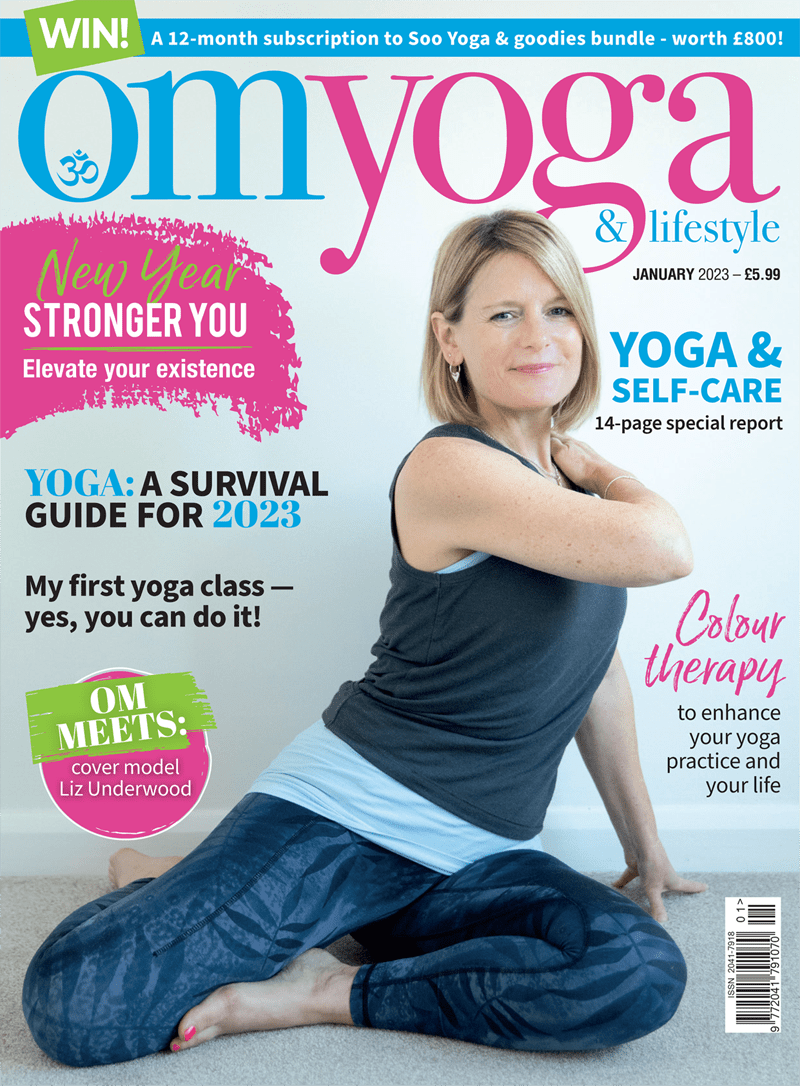
Working towards Pincha Mayurasana
8 postures working towards Pincha Mayurasana, feathered peacock or forearm balance pose, with Ruben De Monte of The Yoga Class. Words by Laura Dodd
January brings with it a sense of starting anew, maybe bringing with it a fresh Sankalpa, or a new challenge or goal. This sequence is for anyone working toward Pincha Mayurasana, forearm balance, or looking to refine the practice of it. The following preparatory poses will open and strengthen the shoulders, strengthen the core and lengthen the back body, to start or continue to work towards your forearm balance.
For this practice you will need two blocks, a yoga strap and potentially access to a wall. Move through this practice in a mindful way, paying attention to your mind, body and breath and not pushing yourself too hard. Let’s begin!
Watch the mini session with Ruben De Monte below, brought to you in partnership with The Yoga Class. Visit theyogaclass.co for the full-length class, plus 250+ more on-demand classes.
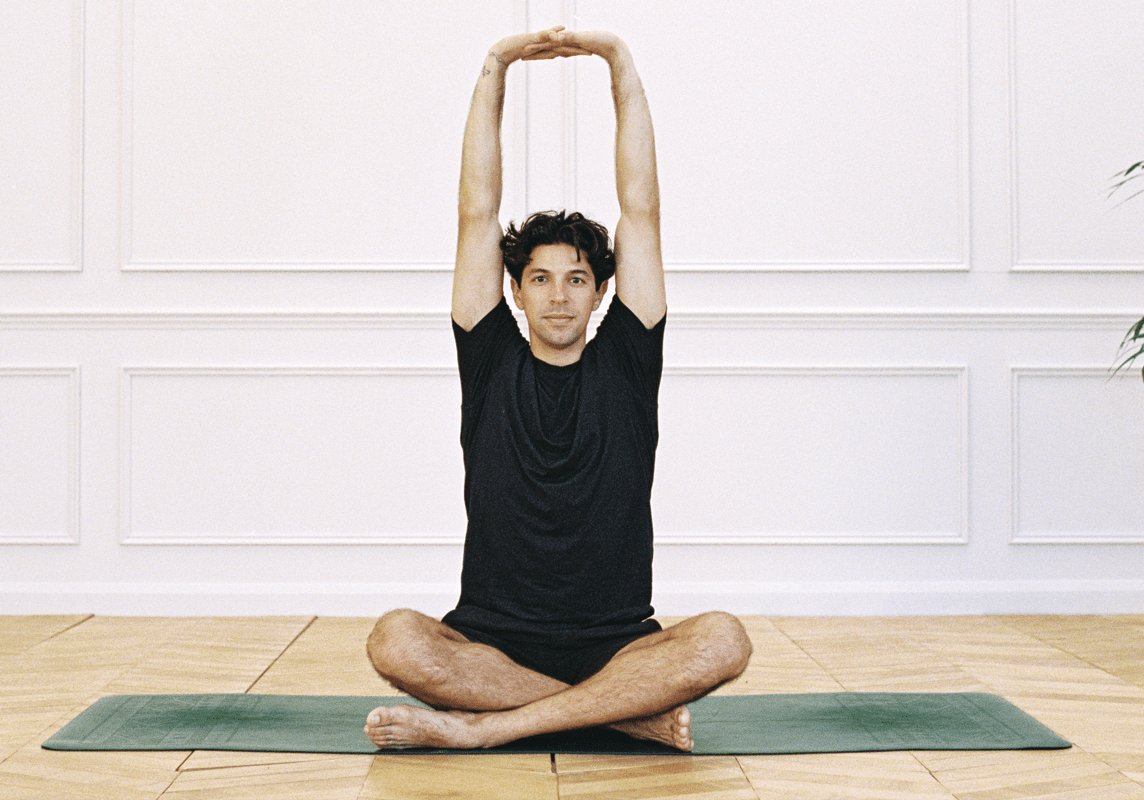
1. Sukhasana Arms Overhead: Easy Pose Arms Overhead Variation
Come to sit, perhaps using a yoga block or a cushion under your sit bones. Bend the knees and cross your right shin in front of your left shin. Move the knees closer together until your feet are directly underneath them. Draw up tall through the spine so the crown of the head lifts, tuck the chin very slightly into the chest and roll the shoulders down the back. Interlace the fingers, stretch the arms overhead and keep pushing the palms away. Hold for five deep and conscious breaths.
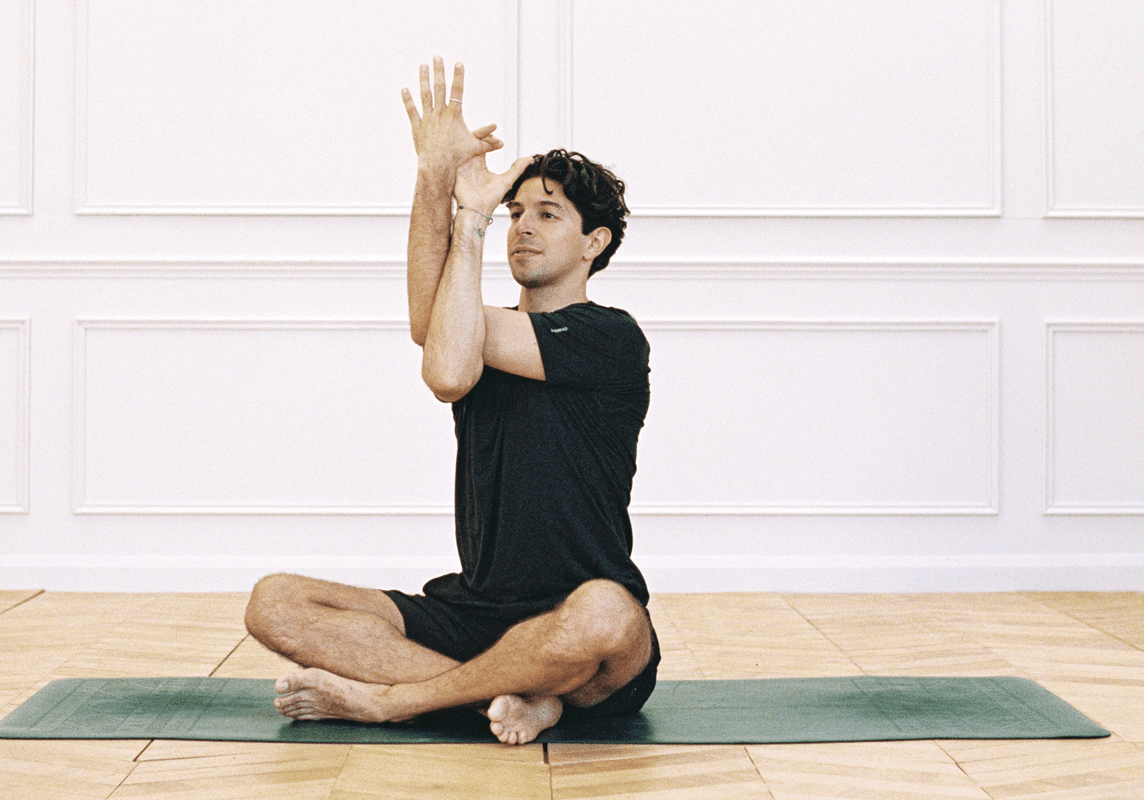
2. Sukhasana Garudasana Arms: Easy Pose Eagle Arms Variation
Stay in Sukhasana, keeping a long spine and the shoulders rolling down the back. Reach both arms out in front of you parallel to the ground. Wrap the left arm over the right, crossing the left elbow over the right upper arm. Draw the right hand towards your face, before crossing the forearms and working towards pressing the palms together. Modify by adjusting the palms away from each other a little. Inhale, to lift the palms up and away from the face. Stay for five deep breaths, before repeating on the other side.
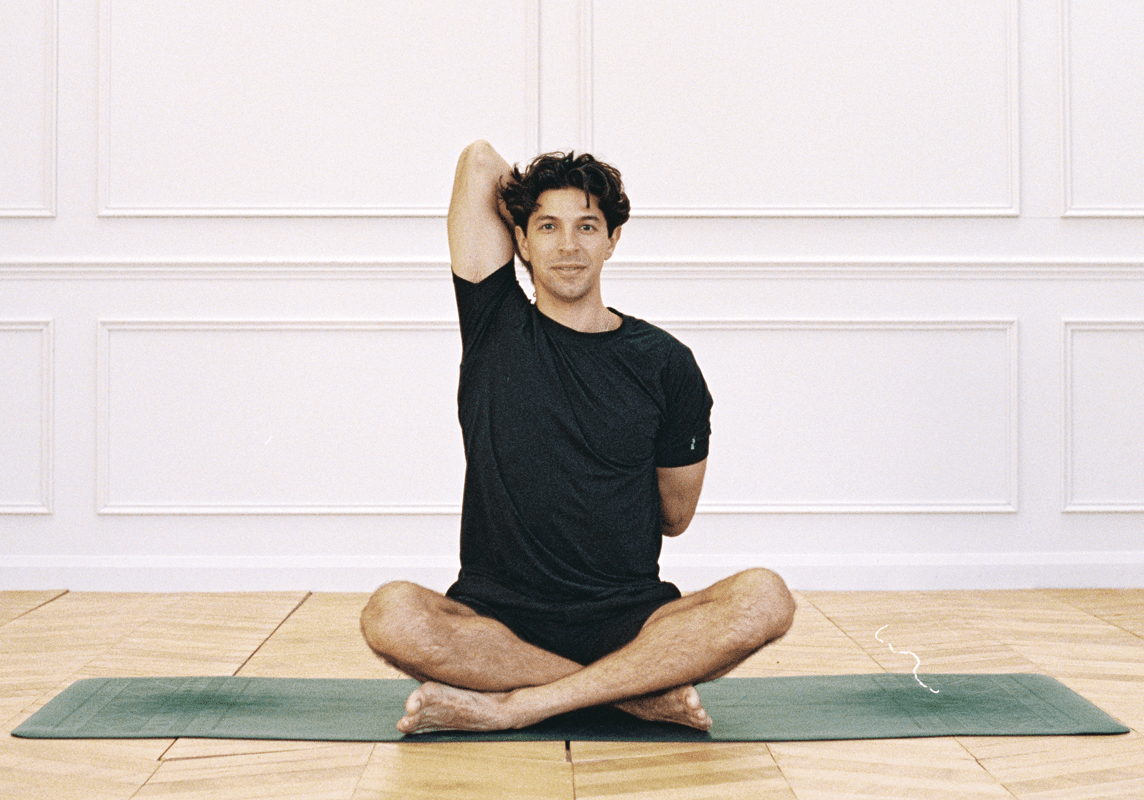
3. Sukhasana Gomukhasana Arms: Easy Pose Gomukhasana Arms Variation
Come back to centre in your seated easy pose, again elongating the spine and lifting out of the lower back. Inhale, lift the left arm to the sky with the palm facing the midline, as you simultaneously take your right arm out to the side, so the palm faces back and thumb down. Exhale, bend the elbows and draw the fingertips together at the point between the shoulder blades, left palm facing in and right palm facing out. Clasp hands or fingers if possible and keep drawing the elbows gently behind you. Modify by using a yoga strap or just get the sensation of drawing the fingers together. Breathe here for five deep breaths before repeating on the other side.
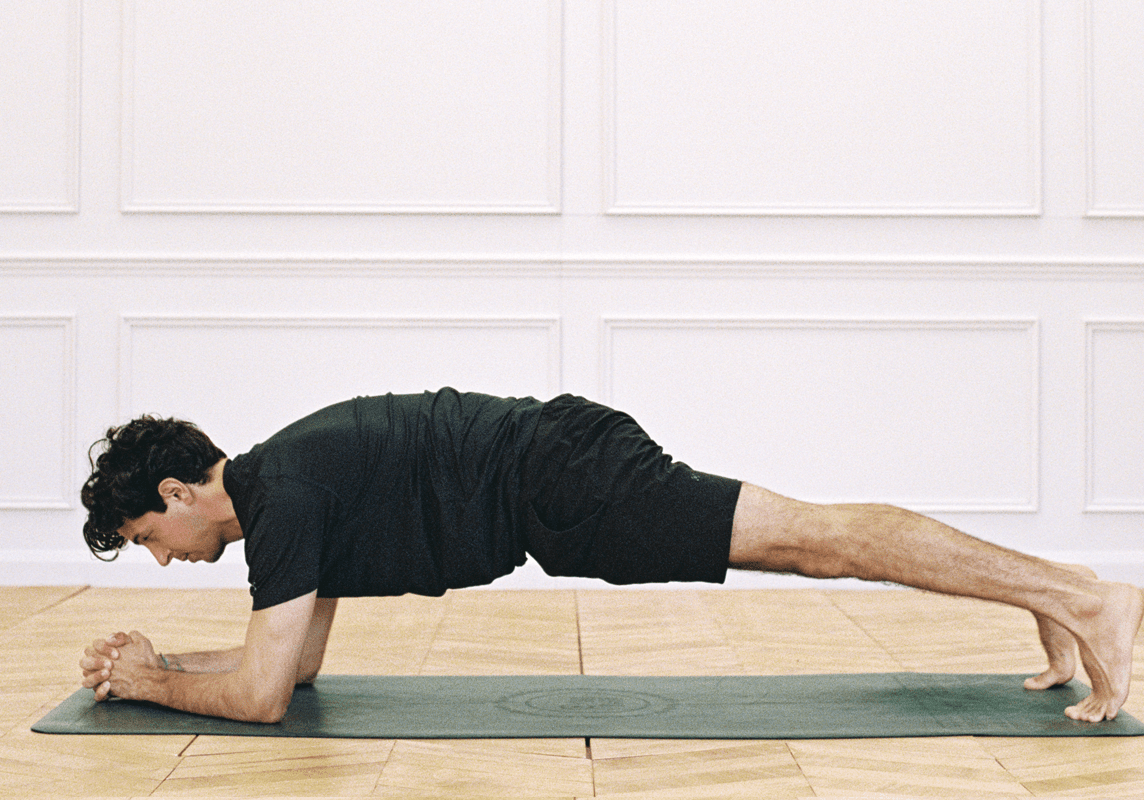
4. Phalakasana II: Forearm Plank Pose
Bring the forearms down and step the feet to the back of the mat, keeping the shoulders directly over the elbows. Push firmly into the forearms, keeping the forearms parallel with each other and shoulder distance apart. Protract the shoulder blades and draw in through the lower ribs and core, keeping the glutes engaged and the hips level with your shoulders. To modify, drop the knees. Hold for five deep breaths.
To build more strength in the shoulders and core, there is the option to work into Phalakasana II to Phalakasana knee to elbow pose. To enter plank pose knee to elbow, inhale, lift the right leg parallel with the hips and shoulders, keeping the toes pointed. Exhale, draw the right knee in towards the right elbow or right upper arm, keeping the position and engagement of the shoulders and core. Inhale, re-extend right leg parallel with the mat. Repeat for three sets or as many times as feels manageable. Maintain a strong breath. Repeat on the other side.
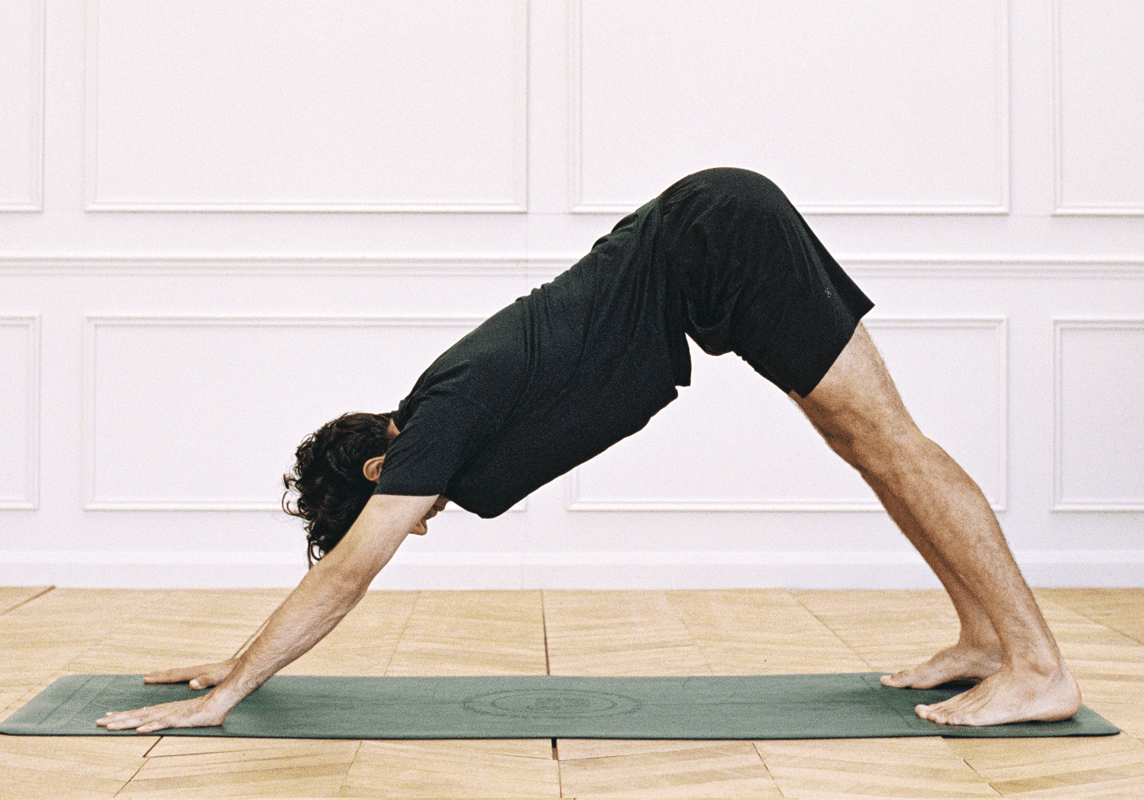
5. Adho Mukha Svanasana: Downward-Facing Dog Pose
Come onto the hands and knees, knees directly below the hips, and the hands just slightly in front of the shoulders. Spread the palms, rooting down through the whole hand with even space between the fingers. Tuck the toes, take an inhale, lift the knees and the hips. Exhale into the pose. Lengthen the tailbone away from the back of your pelvis, lifting the sitting bones towards the ceiling. Firm the shoulder blades on your back, widening them and drawing them towards the tailbone. Keep the chin tucked into the chest slightly, keep gently drawing chest to thighs and engaging through the quads. Work towards extending the legs and dropping the heels to the mat without rounding the spine. Modify by keeping knees bent. Hold for five deep breaths.
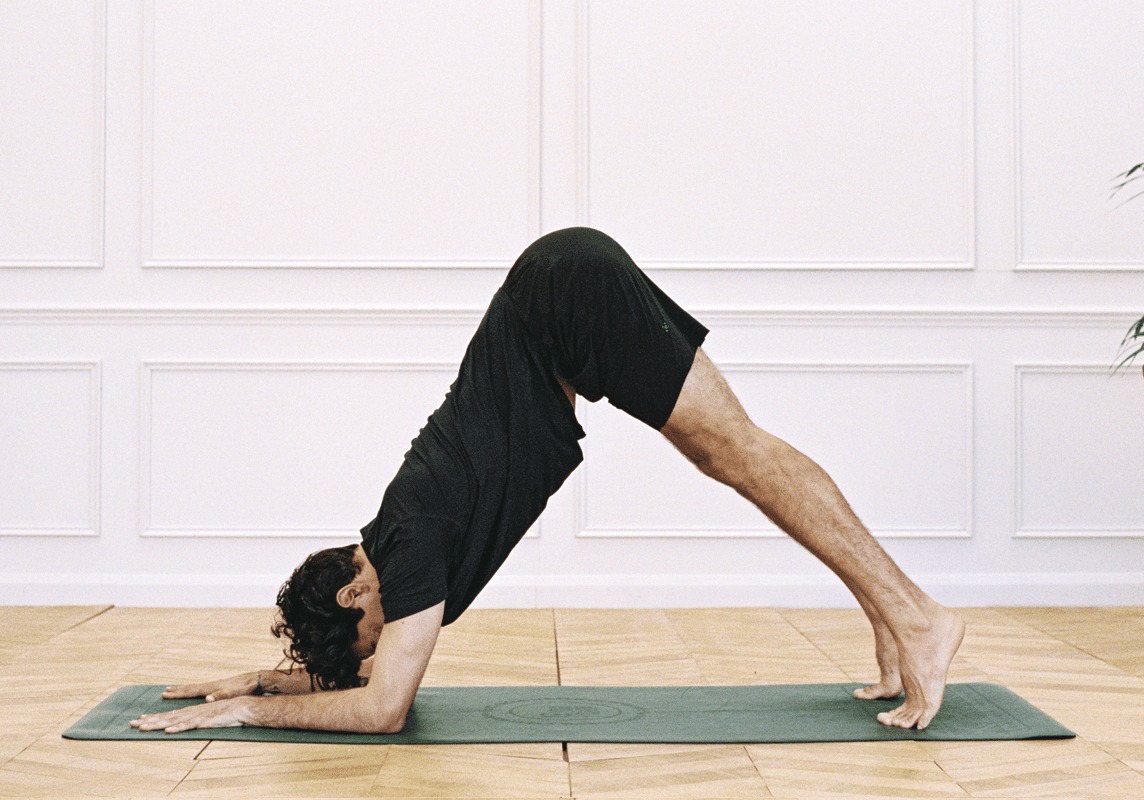
6. Ardha Pincha Mayurasana: Dolphin Pose
From downward dog pose, gently drop the knees, before dropping the elbows, forearms and hands to the mat, ensuring elbows are directly under shoulders. Try to make sure your forearms are parallel and grounded, pressing down gently with your inner wrists. Tuck the toes under. Inhale, lift the knees and the hips, keeping the shoulders over the elbows. Walk the feet in towards the shoulders, lifting the tailbone, drawing chest to thighs and keeping length in the back of the neck. Engage through the inner and outer arms to keep the forearms parallel, as you drive the forearms down to protract the shoulder blades. Engage through the thighs as you start to straighten the legs and draw the heels to the mat. Modify by clasping the hands in a fist or to prayer, and/or bending the knees. Breathe here for five deep breaths.
To build more strength in the shoulders and core, there is the option to work into conditioning drills. There are two options. Either push off the toes, drawing the weight of the body forward and over the shoulders, as you draw the nose towards the thumbs, and then back into dolphin pose. Keep length in the spine and neck, pulsing gently here for a few steady breaths. Second option, lift the right leg high, so the weight of the lifted leg and hips stacks more over the shoulders. Alternate lifting each leg for a few rounds, breathing deeply.
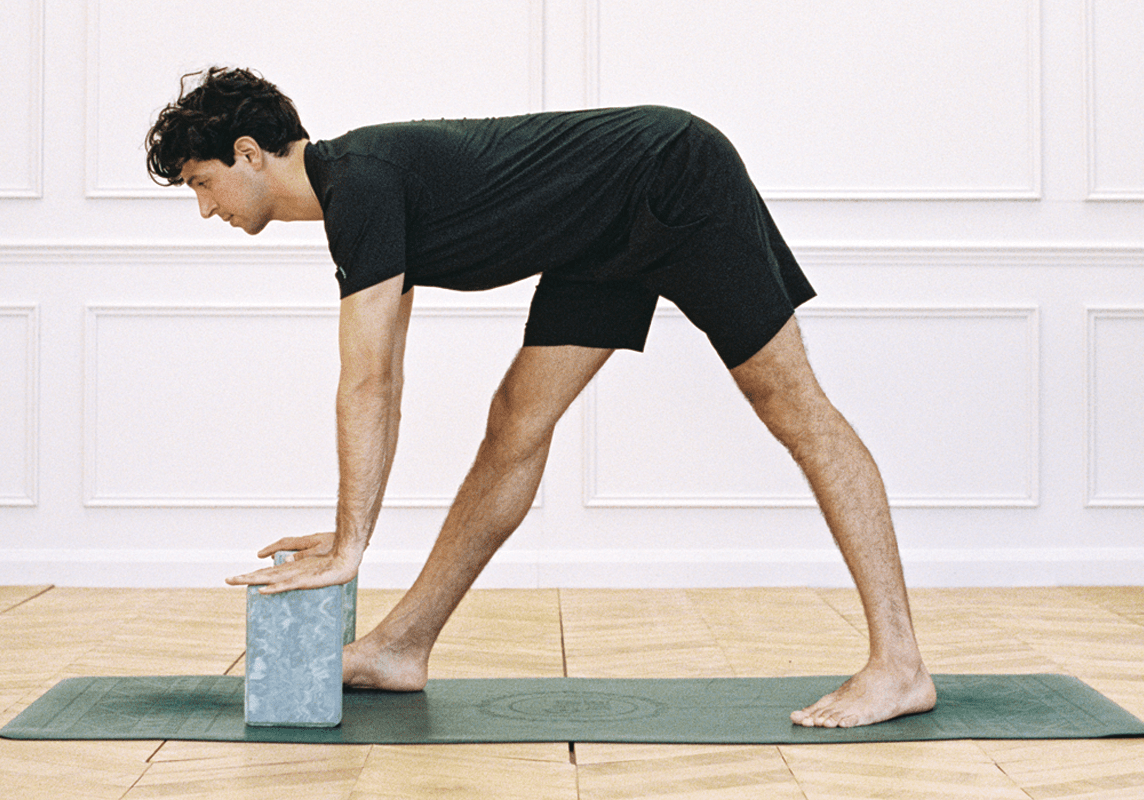
7. Parsvottanasana: Pyramid Pose
From Tadasana, mountain pose, take a wide step back with your right foot. Keep your feet hip-width distance apart and turn the right foot to around 45-90 degrees. Square the hips by drawing the right hip forward. Inhale to lift the chest and draw the shoulders down the back. Exhale, to fold forward, hingeing at the hips, keeping the spine long, the chest open and length in the back of the neck. Bring the hands to the mat. Modify by placing blocks under the hands or taking a micro bend in the front knee. Hold for five deep breaths. Repeat on the other side.
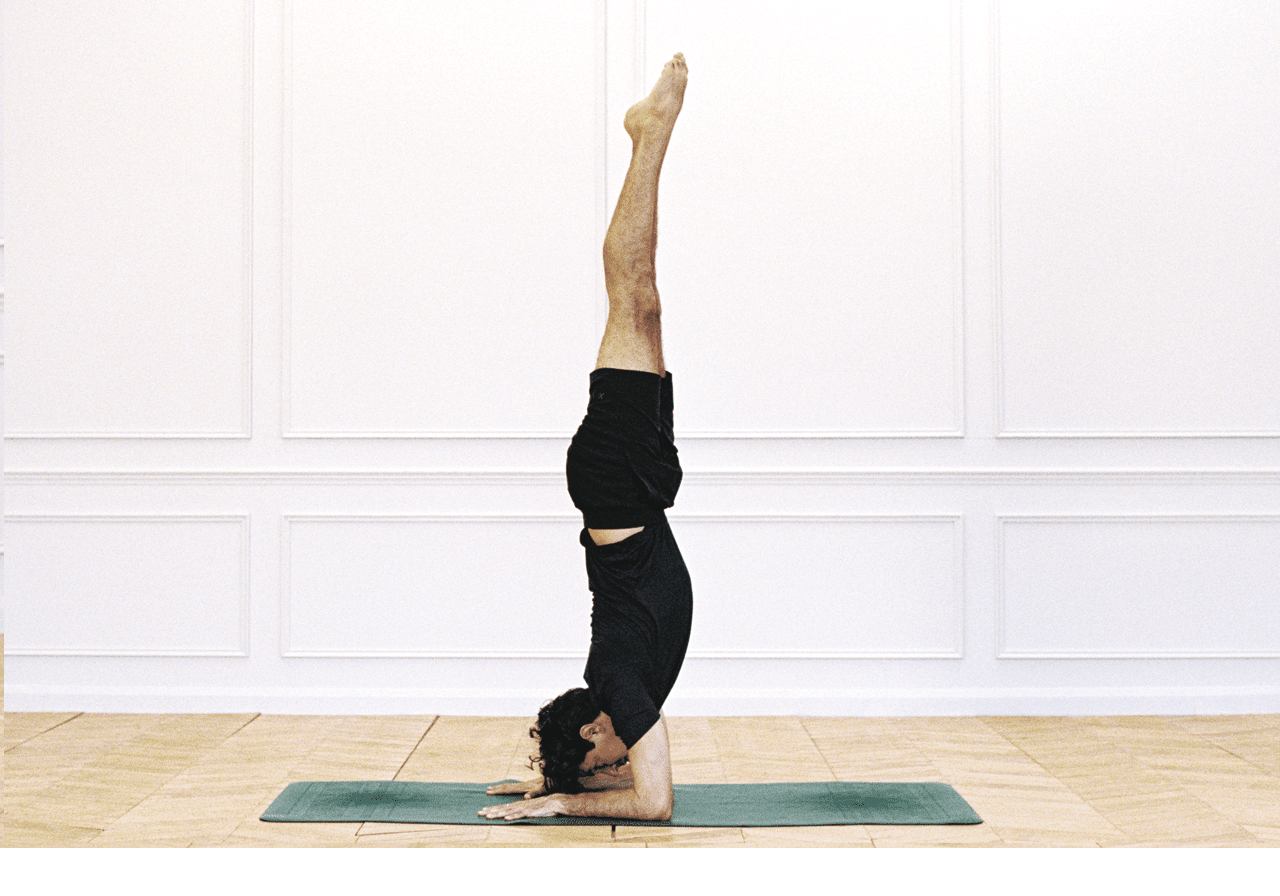
8. Pincha Mayurasana: Forearm Balance Pose
Set up facing a wall if you are newer to the practice. Come into dolphin pose with your fingertips around a hands distance from the wall. Ensure your shoulders are directly over the elbows and the gaze is on the floor between the hands. Root down firmly with the elbows and base of each finger and thumb. Step one foot slightly closer to the elbow and bend the knee, lifting the leg that feels most natural. Exhale, bend the bottom knee and strongly push the floor away, simultaneously swinging the top leg towards the wall, or to stack over the shoulders. Try to keep the top leg straight. Bring your other leg to meet the top, so the legs, hips and shoulders are aligned. Engage through the inner and outer arms as you protract the shoulder blades and keep length in the back of the neck. Switch on the core by drawing the lower ribs and navel to spine; as you find an internal rotation in the legs and the glutes engage strongly. Hold for five deep breaths before repeating with the other leg lifting first. Modify by placing a block between the hands, clasping the hands together or bringing them to prayer. Once you have practiced on both sides, come into a child’s pose.



